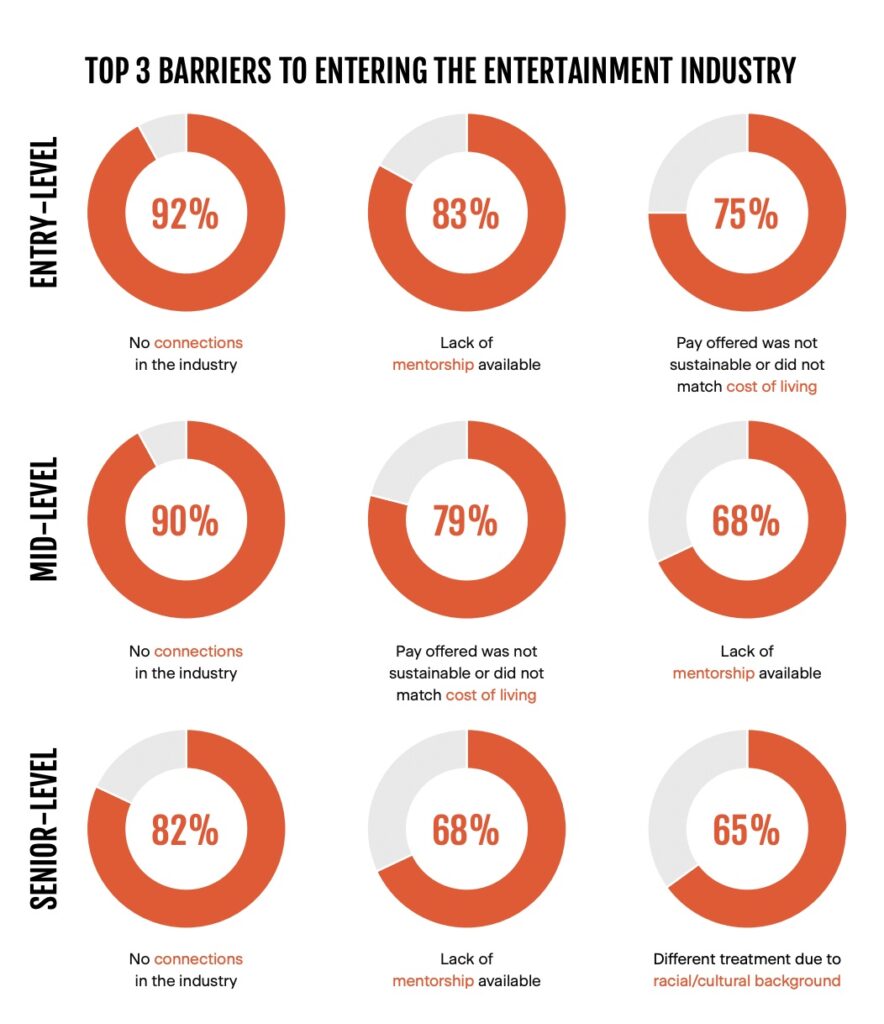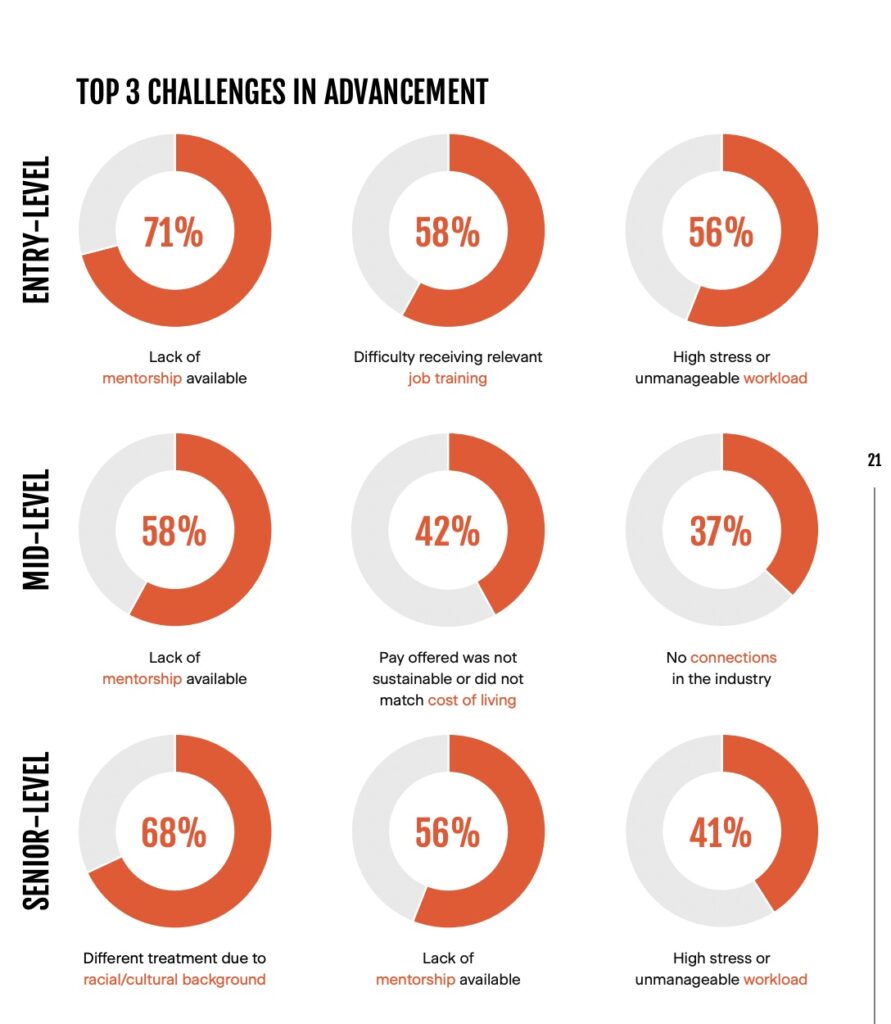by Akemi Tamanaha, Associate Editor
The Asian American Foundation (TAAF) and the Coalition of Asian Pacifics in Entertainment (CAPE) have published a new study highlighting the struggles and triumphs of AANHPI creative executives.
The study, titled “Red Light, Green Light: Overcoming Roadblocks to Asian American Creative Executive Success in the Entertainment Industry,” specifically highlights barriers to advancement for AANHPI creative executives.
Ten-minute surveys were shared with 345 people in CAPE’s network. The two organizations also conducted interviews and focus groups to gather their findings.
TAAF and CAPE defined the role of creative executives as “finding and acquiring intellectual property and other source material, hiring talent including writers and directors, casting, and ultimately wielding the power to greenlight projects and shepherd them to screen.”
Challenges in the workplace
The study found that most AANHPI creative executives felt they were treated differently because of their racial or cultural background. Specifically, 50% of respondents who were entry-level staff and 68% of respondents who were senior-level staff felt they received differential treatment.
In interviews, AANHPI executives said felt like they were “diversity hires,” despite bringing unique insights to the table.
“There’s a limit, they don’t want to be too diverse, you need to fit in. They only want diversity at a skin deep level, not all the other parts,” a mid-level, male executive said during an interview for the study.
The experience of AANHPI women in the industry was even more nuanced. Several respondents said they face challenges based on the intersection of their gender and ethnicity.
“For instance, if we’re negotiating and I push back, people say, ‘You’re aggressive.’ But for a man…’He’s sure of himself, he’s confident.’ As an Asian woman, there are benefits when people meet you, because you’re Asian and a woman, you’re less threatening,” a senior-level female former executive said.
“But the downside is, whenever you act different to their expectations, that’s when they’re calling you a bitch or giving you a bunch of nicknames, saying you’re not a team player… it’s definitely a double edged sword.”
Barriers to Entry and Advancement
The study also asked AANHPI creative executives about the challenges they faced entering and advancing in the entertainment industry. Many respondents said a lack of connections and mentorship was a significant barrier to entry.

A majority of respondents (52%) cited a lack of mentorship as a barrier to advancement. It was the top challenge listed for entry-level and mid-level creative executives. According to the study, 88% also said they wanted to have mentors from their racial/ethnic background.
At the senior-level, 68% of respondents said different treatment due to their racial or cultural background was the top challenge to advancement in the industry.

Pivoting to different industries
Nearly 1 out of 5 respondents said they were looking to pivot to a different role within the entertainment industry. They cited stressful work conditions, poor pay and slow growth as reasons they were looking for a career change.
The study has been published amidst two historic labor movements: a Writers Guild of America strike that recently ended after 148 days and an ongoing Screen Actors Guild-American Federation of Television and Radio Artists (SAG-AFTRA) strike.
In an email interview with AsAmNews, TAAF CEO Norman Chen said he wouldn’t be “surprised if we lose incredible talent after these strikes.”
“When creative executives, especially entry-level staff, leave the industry, it drains the pipeline of those AANHPI creatives who could potentially ascend to those mid- and senior-level positions,” Chen said. “This means fewer AANHPI decision makers are available to greenlight specific creators and content. In the midst of the strikes, we also lost some incredible DEI leaders and advocates who were huge allies for our community. I hope inclusive hiring efforts don’t get deprioritized without these leaders and that executives continue to champion diverse candidates.”
Recommendations
The study also issued several key recommendations for executives at every level. It recommended that senior-level executives actively “recruit diverse people of color.” To attract AANHPI talent, the study recommended establishing more paid internships and full-time positions.
At the entry- and mid-levels the study encouraged creative executives to use networking opportunities to help early career executives find mentors. It also recommends “proactively seek mentoring or advice even through cold calls; develop a personal voice rooted in their experiences and identity; actively work on increasing visibility to supervisors.”
TAAF and CAPE said they are working to distribute the study to major studios, streamers and other community stakeholders.
“We hope the report reaches the highest echelons of leadership within studios and streamers. Real systemic change cannot begin unless people are truly invested in creating a better workplace for Asian American, Native Hawaiian and Pacific Islander (AANHPI) employees,” Michelle Sugihara, the executive director of CAPE, said in an email interview with AsAmNews.
Chen echoed Sugihara’s sentiments.
“I hope that senior leadership reads the report and embraces the opportunity to develop future leaders and decision makers— whether to provide mentorship, make more inclusive hiring choices or organize company training on topics such as intersectionality and race,” he said. “For entry- and mid-level staff, I hope this gives them ideas for how to develop their personal voice rooted in their experiences and identity while also seeking support and allies.”
AsAmNews is published by the non-profit, Asian American Media Inc.
We are supported through donations and such charitable organizations as the Robert Wood Johnson Foundation. This holiday season, double your impact by making a tax-deductible donation to Asian American Media Inc and AsAmNews. Thanks to an additional benefactor, all donations will now be matched up to a total of $12,000.
Please also follow us on Instagram, TikTok, Facebook, YouTube and X.


